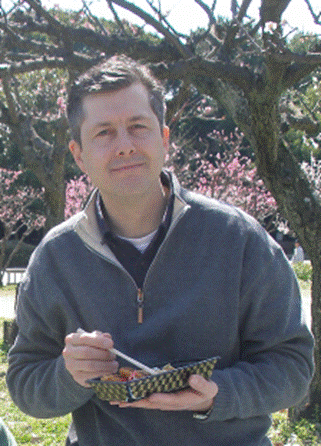The fifth annual Tokyo Seafood Sustainability Symposium, which took place 7 and 8 November, was the largest ever, with 100 speakers and 1,000 attendees, making it Asia’s biggest event focused on seafood sustainability.
The robust attendance shows sustainability has firmly entered the mainstream conversation when it comes to seafood in Japan, according to Wakao Hanaoka, the CEO of non-governmental organization Seafood Legacy, which organized the event.
This year’s event was also hosted by Nikkei ESG, with support from the Walton Family Foundation and the David and Lucile Packard Foundation. Registration was free to international participants.
In his opening remarks, Nikkei ESG General Manager Koichi Sakai said the Tokyo 2020 Olympics – which has adopted a responsible sourcing code that favors seafood certified as sustainable – is pushing distributors and suppliers to provide Marine Stewardship Council (MSC), Aquaculture Stewardship Council (ASC) and other certified products during the games.
In his own address, Hanaoka noted that this was the first time the show was held since the Japanese government announced the most significant reform of its fisheries laws in 70 years. With the Fisheries Reform Act, Japan is moving from total allowable effort (TAE) to total allowable catch (TAC) regulation, with plans for individual vessel quotas (IVQs), and weakening the priority status of local fishery cooperatives for aquaculture sites in order to promote full utilization and encourage new entrants to the fishery.
Hanaoka added the United Nations’ Sustainable Development Goals (SDGs) and environmental, social and corporate governance (ESG) are adding momentum to the sustainability movement. The SDGs were set in 2015 by the United Nations as UN Resolution 70/1. The goals are meant to be achieved by 2030, and Japanese companies try to list some progress for each of the 17 goals in the corporate responsibility report section of their annual reports. Seafood sustainability touches on two of these goals: “Life below the water,” and “Responsible Consumption and Production.” Companies are judged by sustainable investors based on EDG criteria.
In an address to the conference Japanese Vice Minister of the Environment Hiroshi Kamagata referenced a study on coral bleaching and coral death in Japan published by the Intergovernmental Science-Policy Platform on Biodiversity and Ecosystem Services (IPBES), an independent intergovernmental body.
Kamagata praised the goal set at the recent G20 meeting in Osaka that aims for zero plastic entering the ocean by 2050. He also praised the government’s Plastic Smart campaign for collecting and recycling plastic; 7&i Holdings Co., Ltd., which owns the 7-Eleven convenience store chain, is co-managing in the campaign. Additionally, Kamagata said he was hopeful the Satoyama Initiative, a national initiative to move towards an ecosystem-based approach to disaster management, held promise for improving Japan’s environmental performance, as does its participation in the COP 10 and COP 15 conferences on biodiversity and climate change, respectively.
Also at the event, Japan Assistant Minister and Director for Global Issues Tamaki Tsukuda discussed Japan’s international efforts through negotiations and overseas development aid (ODA), to address ocean plastic. He showed that most plastic is not coming from the G8 countries, which generally have advanced collection, disposal and recycling systems. Rather, Southeast Asia is the biggest contributor. The top five were China (estimated at 1.3 to 3.5 million metric tons), Indonesia (0.4 to 1.2 million MT), the Philippines (0.2 to 0.7 million MT), Vietnam (0.2 to 0.7 million MT), and Sri Lanka (0.2 to 0.6 million MT). The United States (40,000 to 110,000 MT) and Japan (20,000 to 60,000 MT) were twentieth and thirtieth in the ranking, respectively. However, Tsukuda said Japan must play a role in reducing the amount of plastic in the oceans, and he outlined Japan’s program to support collection for burning or landfill disposal in developing countries.
Domestically, the government is promoting incineration for energy production, development of paper with a barrier layer to replace plastics, and development of plastics that are biodegradable in a marine environment. He also talked about international cooperation against illegal, unreported and unregulated fishing and ocean-based initiatives against carbon dioxide emissions, which are a leading cause of global warming.
Tokyo Governor Yuriko Koike, who had previously served as the country’s environment minister, spoke at the symposium regarding the management of four remote Pacific islands administered as part of Tokyo Prefecture. Issues in these areas are coral bleaching, illegal harvesting of coral by Chinese vessels, and the tendency to focus fishing effort on only a few high-value species due to high transportation costs.
Takashi Koya, director general of the Resources Management Department of the Japan Fisheries Agency, introduced a tool called a Kobe Plot (a four-quadrant graph showing resource status, yearly resource trajectory, or both, which allows a graphic indication of underfishing or overfishing) and encouraged its use. Finally, he stressed that under the reform, science and policy are separated so that stock assessments are determined solely by the scientists, while policy is determined by the government.
Koya also discussed Japan’s landmark fisheries policy reform. First, he showed that much of the decline in Japan’s fish landings were due to countries extending their exclusive economic zones to 200 nautical miles, and to the collapse of the Japanese sardine fishery from the 1980s. But after subtracting for these factors, Japan’s landings still declined by over half, despite a decrease in the number of fishermen. Koya put the blame on poor resource management, specifically management by TAE rather than TAC. Under the fisheries reform, Japan will increase the species managed by TAC from 60 percent to 80 percent.
“We will work on the maintenance of biomass,” Koya said.
Photo courtesy of Chris Loew/SeafoodSource







